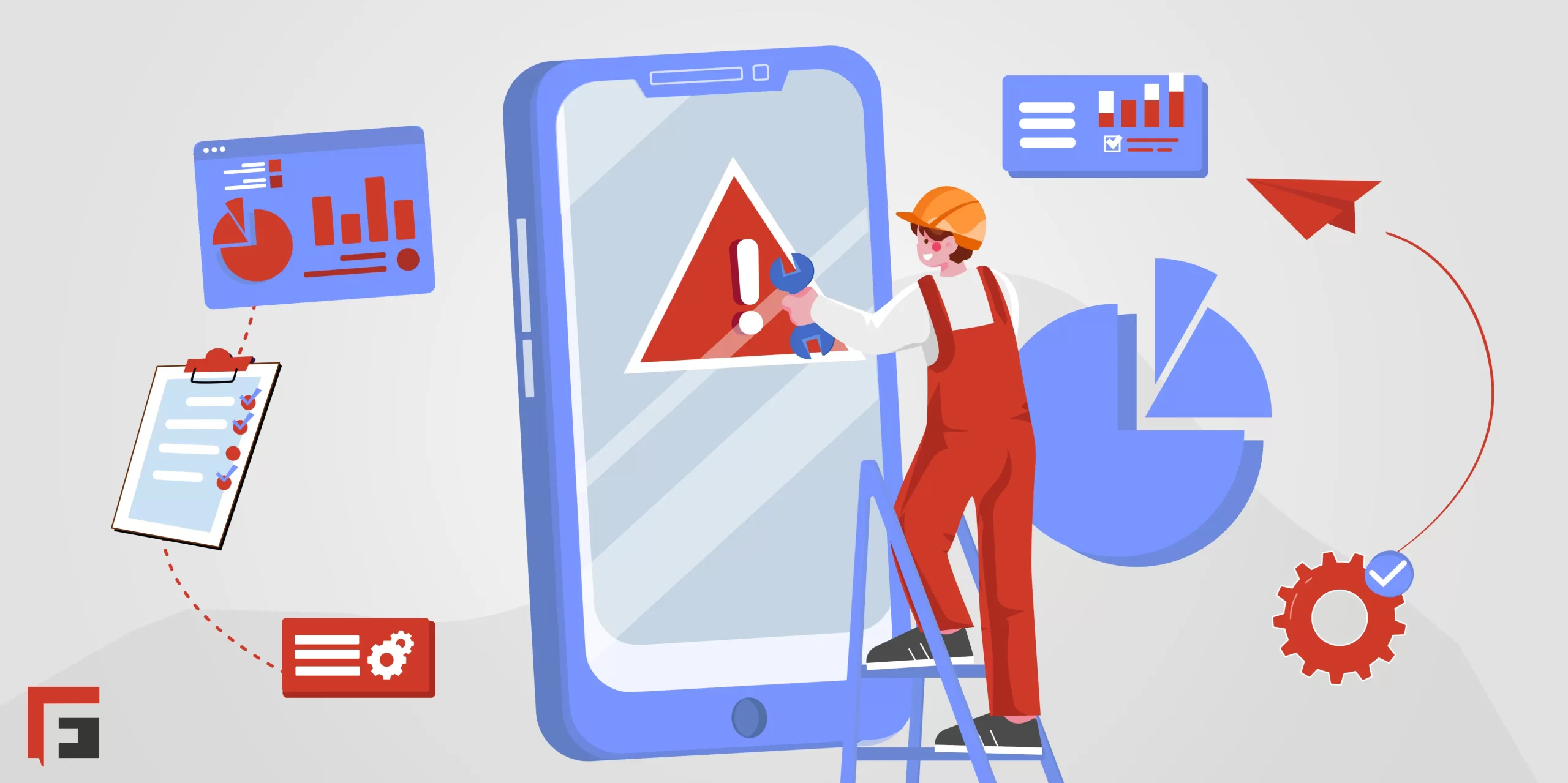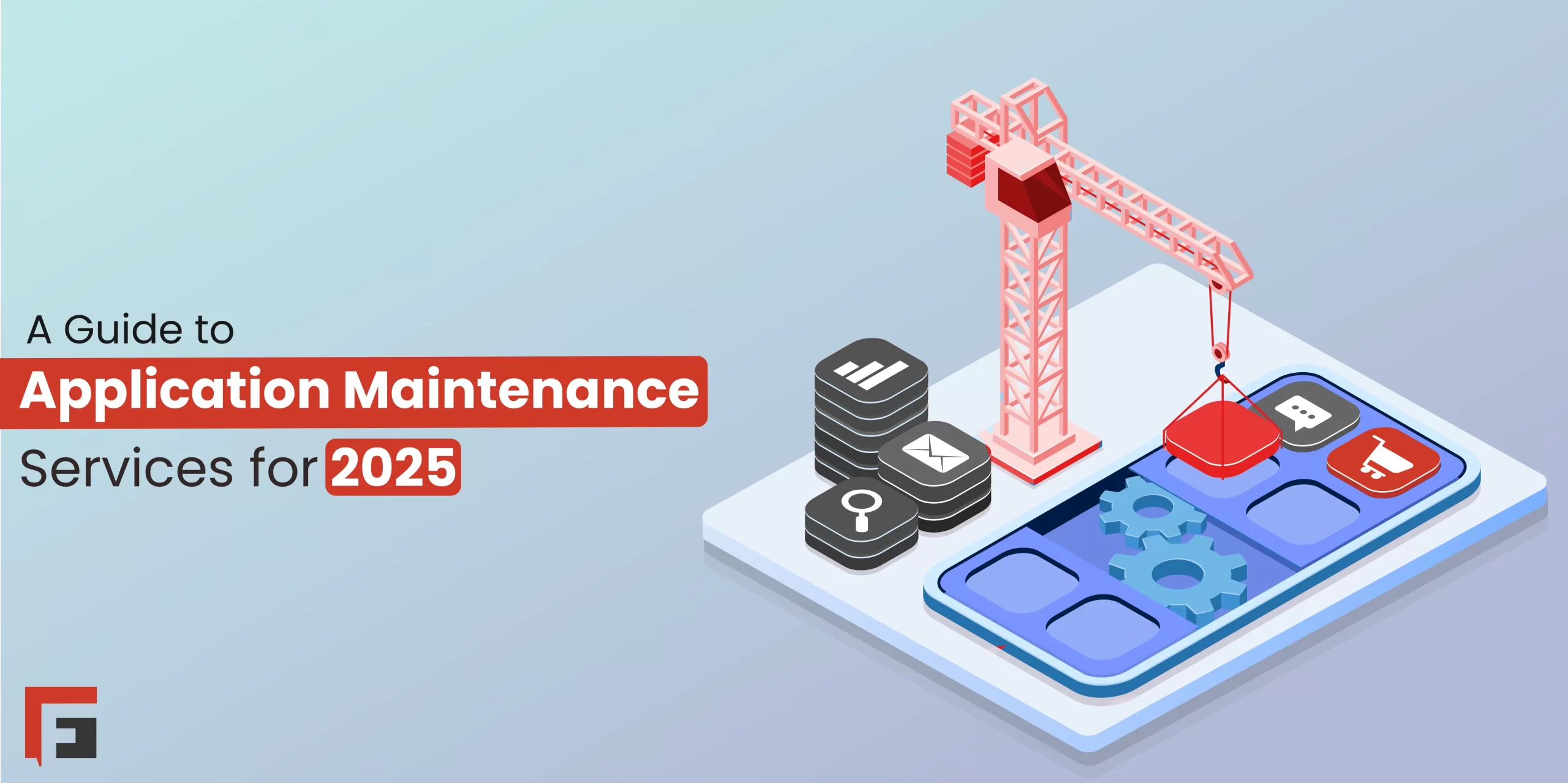
A Guide to A Successful Application Maintenance Strategy in 2025
| Author: | Hagar Hadad |
|---|---|
| Last updated: | January 19, 2025 |
| Categories: | Application Maintenance |
| Reading time: | 11 mins |
The importance of maintaining applications has increased significantly. While businesses often focus on development, ongoing maintenance is also important, as an app is never truly "complete" after launch. Effective application maintenance services ensure your app stays functional, secure, and aligned with users' changing needs. That’s why a well-executed maintenance strategy can determine whether an app becomes outdated or remains successful in a competitive market.
How to Build a Successful Application Maintenance Strategy
To build a good and successful app maintenance strategy, it’s important to tackle various aspects of the app’s lifecycle. A strategy isn’t just about fixing bugs but also ensuring that the application evolves with the market and continues to provide value to users. This is why we’ve made a guide on how to build a successful strategy for you down below.
- Run Regular Monitoring and Diagnostics
One of the foundational and most important aspects of any successful application maintenance strategy is continuous monitoring. This approach is proactive and ensures that any issues are detected early, minimizing the impact on end-users. Using monitoring tools to track performance metrics, user behavior, error logs, and crash reports is important for identifying areas of improvement.
For instance, if a specific feature in the app consistently experiences errors, it might indicate an issue in the code that needs addressing. Regular monitoring can highlight these issues and vulnerabilities before they become significant problems, ensuring that users experience minimal disruption. In fact, a study has shown that around 28% of apps are deleted within the first 30 days of use, primarily due to performance issues or lack of regular updates.
- Conduct Regular Updates and Detect Bugs
Even the most well-tested applications can experience bugs after they are released. Frequent updates and bug fixes are crucial to keeping the app in top shape. According to a study, 88% of users will stop using an app if they experience crashes or glitches. Therefore, maintaining a schedule of regular bug fixes and ensuring that the app is free from issues is integral to the app’s longevity.
Application maintenance teams should quickly respond to reports of bugs and offer patches that address them. This is particularly true for security vulnerabilities, which can have serious consequences if left unchecked. In fact, the 2024 Verizon Data Breach Investigations Report found that 30% of data breaches occurred due to vulnerabilities in applications. This emphasizes the importance of regularly updating your application to address security concerns and bugs.
- Treat Security as A Top Priority
Cybersecurity is one of the most important aspects of application maintenance. Applications are frequently targeted by cybercriminals, and a lack of security updates can expose vulnerabilities that may lead to significant data breaches, theft of sensitive information, or system outages. Keeping the app updated with the latest security patches is an essential part of the maintenance phase.
Security is not just about fixing vulnerabilities after they are exploited; it’s important to implement proactive measures to prevent them from happening. Avoiding these problems altogether is better than trying to overcome the consequences of them happening. Integrating security features like two-factor authentication, encryption, and secure access management can help mitigate risks. Moreover, regular penetration testing and vulnerability assessments should be part of the maintenance cycle to ensure that the app remains secure.
- Work on Application Improvement and New Features
Applications need to evolve while app maintenance is being done to meet the always-changing demands of users. Old apps that don’t introduce new features or improve existing functionalities quickly lose their relevance in the market, leading to huge financial losses. An application maintenance strategy must include a clear roadmap for continuous enhancement to prevent that from happening.
Application enhancement goes beyond fixing bugs; it’s also about improving the app’s capabilities to keep it competitive in today’s market. New features, user interface (UI) improvements, or better integrations with other systems can provide users with more value and improve user retention rates, which greatly affects business.
In addition, adding new features also helps keep users engaged. These features improve the retention rate compared to apps that do not receive frequent updates and have new features. This is why application enhancement plays a significant role in ensuring that an app remains popular among users and continues to meet their expectations.
- Ensure Compatibility with New Operating Systems and Devices
Because operating systems continue to evolve, it’s crucial to ensure that the application maintenance remains compatible with the latest versions. If your app doesn’t keep up with these changes, it may become incompatible, leading to crashes, performance issues, or poor user experience.
A successful application maintenance strategy should include regular updates to ensure compatibility with the latest operating systems. Additionally, businesses should also test the app’s performance on various devices to ensure that it functions properly across different screen sizes, operating systems, and hardware configurations. If this doesn’t happen regularly, it will result in losing potential customers who use different devices that are more modern and convenient.
- Have Data Management and Backup
Another important part of the application maintenance strategy you must be aware of is data management. As applications grow, the volume of data they generate and handle increases. Ensuring that this data is properly stored, managed, and backed up is crucial for the smooth operation of the app. Companies that fail to implement a strong data management and backup strategy usually face data loss, corruption, or downtime.
The best way to avoid these problems is to have regular backups of data and settings to ensure that the app can recover quickly if an outage or system failure unexpectedly happens. Additionally, maintaining data integrity and privacy is crucial for building trust with users, particularly when dealing with sensitive data. Following GDPR and other data protection regulations helps to avoid costly fines and legal issues.
- Keep Up with Application Development Integration
Modern apps going through application maintenance often interact with third-party services, which is why application development is important. As these services evolve and have more updates and modifications, developers must make sure that the app remains integrated seamlessly with the external services it relies on.
This could involve adapting to changes in third-party providers, incorporating new technologies like machine learning or AI, or integrating with new payment systems. Maintaining strong integration ensures that the app remains functional and relevant, avoiding problems that could cost a lot of money.
What Are the Best Practices for Successful Application Maintenance?
To implement an effective application maintenance strategy, businesses should follow some practices that can help them, including the following:
- Defining Clear Goals and Metrics
Before implementing your maintenance strategy, it is important to define clear objectives. These objectives include determining the goal of your app maintenance. Is it to improve performance, enhance security, or add new features?
Once the objectives are clear, it is easier to track progress and measure success according to what you had in mind. To do this, use key performance indicators (KPIs) like user engagement, crash rates, user retention, and bug-fix turnaround time to help assess the impact of maintenance efforts.
- Prioritizing Issues and Setting a Maintenance Schedule
Not all maintenance tasks are equally urgent. Establishing an application maintenance schedule and prioritizing issues based on severity is crucial for effective resource management. For instance, critical bugs or security vulnerabilities cannot wait and should be addressed immediately, while minor updates and feature enhancements can be scheduled for later releases.
- Automating Maintenance Tasks
To be able to prioritize fixing critical bugs and security vulnerabilities, it’s advised to automate repetitive maintenance tasks like data backups, monitoring, and performance tracking. Automation can reduce human error, save time, and ensure that regular application maintenance tasks are completed consistently and promptly while working on more pressing matters.
- Gathering User Feedback
Regularly engaging with users and gathering feedback is crucial for application enhancement. Users provide valuable insights into how the app can be improved from their point of view, what features are missing, or where bugs are occurring. Incorporating user feedback into the application management strategy can help align the app’s development with user needs and expectations.
- Staying Up to Date with Technology Trends
Staying informed about emerging trends and technologies in the app development space is the only way to stay relevant. Using AI practices and integrating new technologies can help improve your app and keep it competitive in a market that changes by the second.
Why is Application Maintenance Important?
App maintenance is often seen as an afterthought once the app is launched and available for use. However, this phase is just as important, if not more so, than the initial development process.
An application may launch successfully, but if it is not properly maintained, its performance can degrade over time, user satisfaction can decline, and security vulnerabilities can emerge. This is why application maintenance is a phase in the process of the lifecycle of any app.
Also, a key driver of an app’s success is user experience (UX). Maintaining an app regularly ensures that its performance remains smooth, its interface is user-friendly, and its features are bug-free. App maintenance also prevents cybersecurity threats. Technology is improving every day, and so are the methods used by cybercriminals to exploit vulnerabilities in software. Application maintenance plays a crucial role in addressing these security threats.
Lastly, app maintenance helps save costs. A study by Gartner highlights that application development and maintenance can cut costs by more than 50% when done right. This is important because most companies spend a lot of money on app maintenance every year, and by doing it right, they can save a lot.
Work with FlairsTech
At FlairsTech, we understand that application maintenance is essential for the long-term success of your software, and we are committed to helping you optimize the performance, security, and reliability of your applications through our comprehensive maintenance services.
With over 400+ applications under our care, FlairsTech has a proven track record in providing successful application management strategies that not only ensure the smooth operation of your app but also deliver measurable improvements in efficiency and cost-effectiveness. Also, our 300+ expert team of professionals ensures that your applications experience zero downtime during updates, patches, or maintenance work.
Our application maintenance strategy is designed to ensure that your system operates at peak efficiency. By continually monitoring and optimizing your applications, we help you achieve a 40% improvement in system efficiency. FlairsTech’s maintenance services ensure that your applications deliver seamless and responsive user experiences.
One of the most significant advantages of working with us is our ability to reduce operational costs. With our proactive maintenance approach, we identify and address potential issues before they escalate into expensive problems. By optimizing processes, automating routine tasks, and preventing system downtimes, we help you achieve a 30% reduction in operational costs, ensuring that you get the maximum value out of your application maintenance budget.
In addition, we adhere to the highest industry standards by maintaining ISO 27001 and 9001 certifications. These certifications reflect our commitment to quality management systems and information security. Additionally, we are fully GDPR compliant, ensuring that your application and user data are handled in accordance with the latest data protection regulations.
We offer expert maintenance services for various types of applications, including web applications, mobile applications, desktop applications, enterprise applications, cloud-based applications, and application programming interfaces services.
Frequently Asked Questions
- What is app maintenance?
App maintenance refers to the ongoing process of updating, optimizing, and fixing an application to ensure it remains functional, secure, and efficient over time. This includes bug fixes, performance improvements, and feature updates.
- Why is app maintenance important?
App maintenance is crucial for keeping software up to date, ensuring security, enhancing performance, improving user experience, and meeting evolving market and technological demands.
- How often should app maintenance be done?
App maintenance should be performed regularly, with updates and checks on a monthly or quarterly basis, depending on the complexity and usage of the app. Critical updates, such as security patches, should be handled immediately.
- What are the benefits of app maintenance?
Benefits of app maintenance include improved system efficiency, reduced operational costs, enhanced security, better user experience, and higher application availability with minimal downtime.
- How does app maintenance impact user experience?
Proper app maintenance ensures that an app remains fast, bug-free, and easy to use. This improves user satisfaction, reduces churn, and drives higher engagement.
- How does app maintenance reduce operational costs?
By proactively addressing performance issues, preventing system failures, and optimizing resources, app maintenance helps reduce downtime and improves overall efficiency, lowering operational costs.
- What is the role of app maintenance in improving system efficiency?
Application maintenance enhances system efficiency by optimizing performance, fixing bugs, updating outdated components, and ensuring compatibility with new technologies. This leads to faster processing, reduced downtime, and a smoother user experience.







